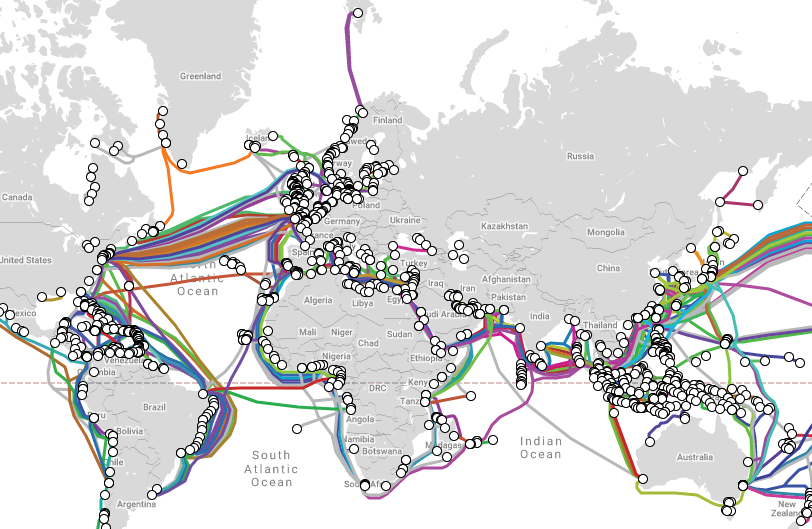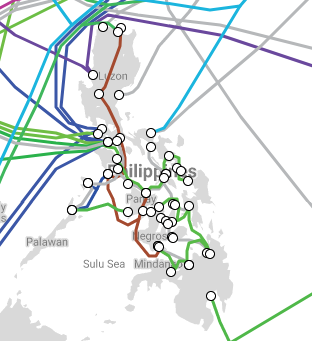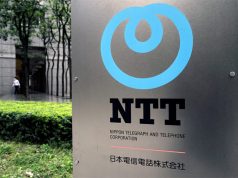The two big telecommunication companies in the country were included among the most improved internet providers of 4G availability in the world despite the still slow internet speed compared to other countries.
UK-based Opensignal Ltd. listed Smart Communications and Globe Telecommunications in the roster of the top 30 mobile network operators in the world that improved its services in terms of 4G internet connections and video experience.
The report was based on the mobile network experience between the first six months of 2019 and the first half of 2020. It has four critical measures: video experience, download speed experience, upload speed experience and 4G availability.
The average proportion of users that used the 4G of PLDT’s wireless arm Smart grew by 17.9% and Globe’s scores for video experience increased by 32.7% and for download speed by 24.5%.
Opensignal described these scores as “comfortably above the global average.”
Both telecom providers welcomed such recognition of their efforts and assured their subscribers to continue improving their services.
Alfredo Panlilio, Smart President and Chief Executive Officer and PLDT Chief Revenue Officer, said that they hoped to be at par or surpass the internet capabilities of Vietnam and Thailand.
“As the country’s largest and only fully integrated telco, we will continue to invest in improving our network and our services, and we will benchmark our performance against countries like Vietnam and Thailand to be better. I think every Filipino deserves that kind of service,” Panlilio said.
Gil Genio, chief technology and information officer of Globe, also said that the public should expect more “remarkable” improvements from them.
“Expect more of these remarkable improvements as we continue with our aggressive efforts to upgrade the network for better connectivity and service,” Genio said.
Submarine cables
Since last March, there has been a surge in demand for faster and better internet connection as Filipinos resorted to digital platforms in their attempts to cope with the tough lockdowns and the ongoing novel coronavirus pandemic.
Companies employed different remote or work-from-home schemes to their workers. Schools in all levels also tried to adapt to distance learning which mostly involves online classes as face-to-face teaching is still prohibited.
As of August, a SpeedTest by Ookla showed that the Philippines did not even make it to the top 10 or 20 countries in terms of the global average of broadband speeds.
READ: Honasan claims Philippines’ internet connectivity is ‘not that bad.’ Here’s what speed test says.
The country is only at the 106th place in terms of the global average of fixed broadband speeds with only 25.34 Mbps (megabit per second) and slower for mobile with only 16.44 Mbps which placed the Philippines at the 119th spot.
Aside from political setbacks, some Reddit users discussed that the lack of submarine cable systems that are supposed to support bandwidth capacity in the country could be one of the main causes of poor connectivity.

A submarine cable or an undersea cable is a complex system of wires installed either underwater or underground that power the global internet. These wires therefore carry all the world’s tweets, posts, emails and other online content.
One Reddit user cited an interactive map called the Submarine Cable Map that showed the thousands of undersea cable systems.

In the map, it could be seen that the Philippines has fewer cable landing stations compared to its neighbors.

Submarine Cable Networks said there are 10 international submarine cable systems that land on nine cable stations in different parts of the Philippines.
Last June, PLDT announced that it joined the Asia Direct Consortium that connects the Philippines, China (Hong Kong and Guangdong Province), Japan, Singapore, Thailand and Vietnam via a 9,400-kilometer submarine cable.
This will support its shift to digital services such as the 5G, the “Internet of Things,” and artificial intelligence.
PLDT has also previously partnered with Asian American, one of its international cable system. It is a long fiber optic cable network that connects the Philippines to the US.
Last Wednesday, the company advised the public of upcoming emergency maintenance activities for five days starting Friday, September 25. It assured its millions of subscribers that measures are in place to minimize the activity’s impact.
READ: PLDT, Smart assure subscribers of continued connectivity amid maintenance activities
Meanwhile, Globe also recently announced its plans to undertake the “largest network upgrade” where it will install more cell sites to have 4G/LTE using different frequencies to boost the connectivity nationwide.
Editor’s Note: A unit under PLDT’s media conglomerate has a majority stake in Philstar Global Corp., which runs Interaksyon. This article was independently produced following editorial guidelines.










